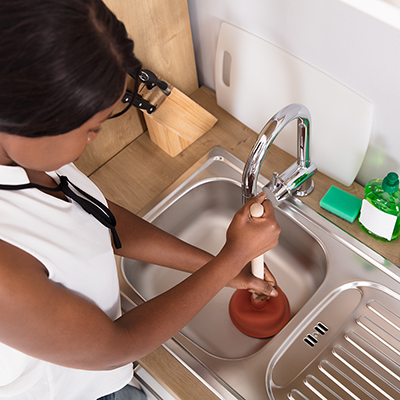How to Unclog a Kitchen Sink

Published February 12, 2024
If you’re wondering why your kitchen sink is not draining, draining very slowly or giving off an odor, you may have a clog. It is important to be able to take care of a clog as soon as possible. If a blockage is allowed to build up, it can lead to burst pipes and a call to professional plumbing repair services for help. This guide reviews different methods for how to unclog a kitchen sink.
Safety: Wear rubber gloves when clearing a clogged sink drain.
Difficulty:
Beginner
Duration:
Under 2 hours
Table of Contents
Plunge the Kitchen Sink
Use Boiling Water to Dislodge the Sink Clog
Inspect the Garbage Disposal
Dissolve Clog with a Baking Soda Mixture
Use a Wet-Dry Vacuum to Clear the Sink
Use an Auger on the Upper Part of the Pipe
Plunge the Kitchen Sink
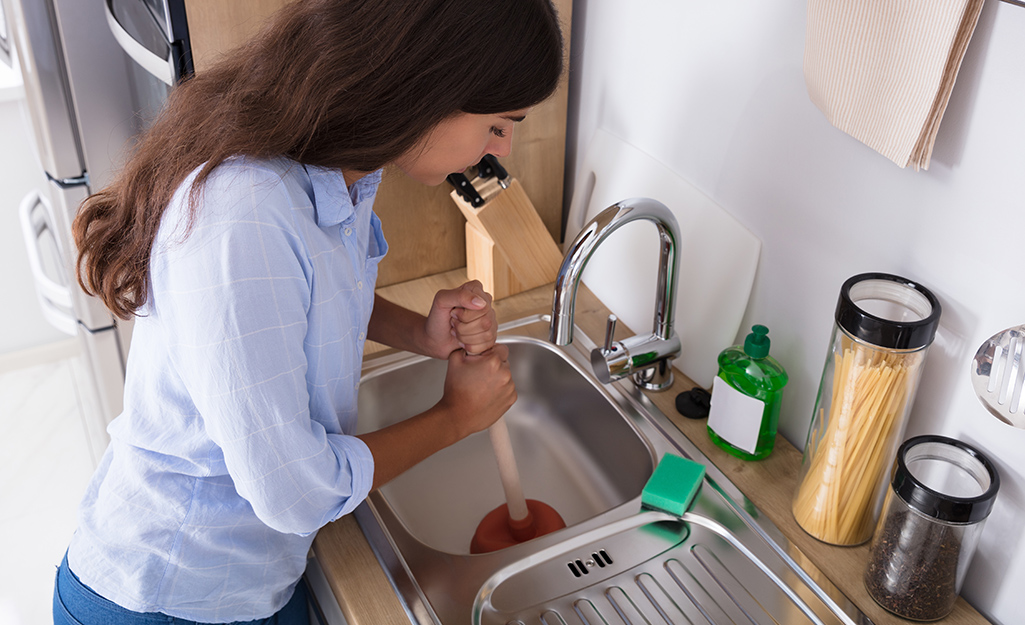
- Before unclogging kitchen sinks with standing water, use a cup or basin to remove the water. Some methods may require the addition of fresh water.
- Always try plunging first. Small clogs can often be dislodged with a cup plunger. A simple plunger with a flat rim, it creates a seal over the sink hole to apply the pressure needed to dislodge the clog.
- Make sure the sink contains enough water to submerge the head of the plunger and place the cup over the drain opening.
- Maintain a seal and plunge up and down rapidly, keeping the plunger under the water level and lifting it only an inch or so on every upstroke.
- If you have a dishwasher with a flexible hose, place a clamp over the line or use a pair of vice grips to pinch the line closed. If you are concerned about damaging the hose, disconnect the hose and place a pipe cap over the pipe or disposal inlet. This prevents water from backflowing into the dishwasher line while you plunge.
- If plunging does not work, then move on to other methods for unclogging a kitchen sink.
Tip: Always keep separate plungers for use in the bathroom or kitchen.
Use Boiling Water to Dislodge the Sink Clog
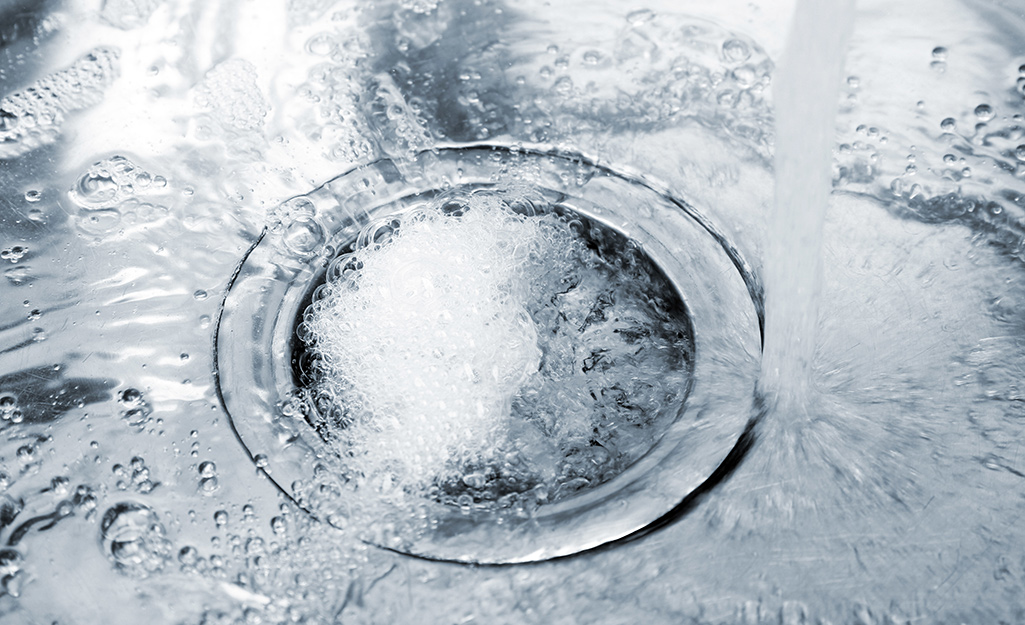
- Bring a half gallon of water to a rolling boil over high heat.
- Remove any standing water from the sink.
- Carefully remove the boiling water from the stove and pour directly into the drain in a steady stream.
- The water should begin to drain. If it does not, allow the water in the sink to cool completely, then repeat the process an additional time.
Tip: Do not use this method if the drain is attached to PVC pipes. Boiling water could soften or damage the material.
Inspect the Garbage Disposal
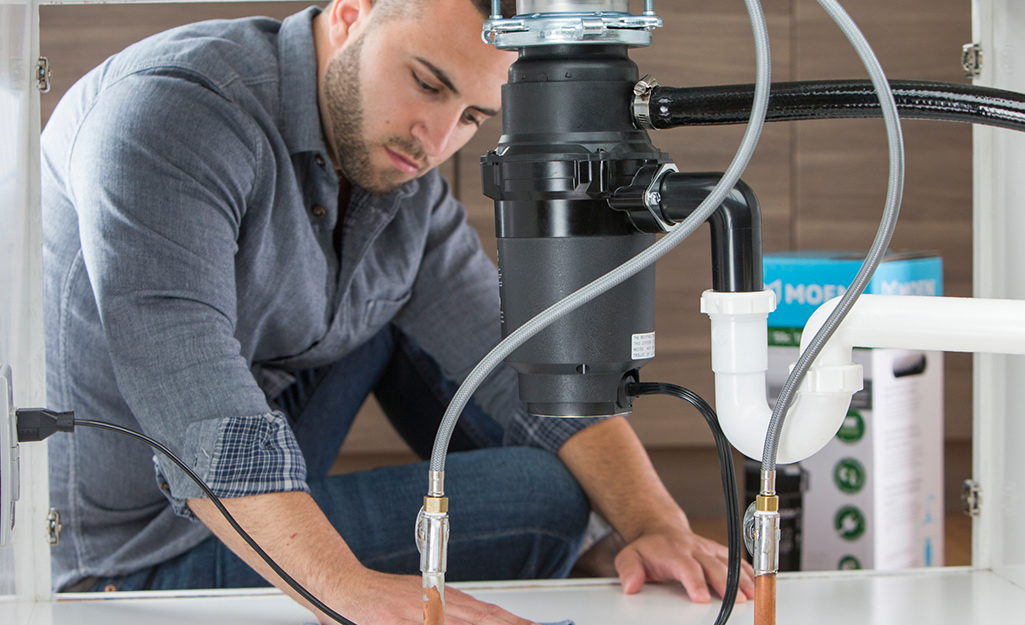
When unclogging a sink with a garbage disposal, confirm that the unit is not the problem as soon as possible.
- Turn on the garbage disposal. If the clog is in the disposal, running it may break it up.
- If the disposal is not running, check to see if it has overheated. Activate the reset switch at the side or on the bottom of the unit. Then turn it on again to see if this clears the clog. Check our guide on How to Unclog a Garbage Disposal.
Dissolve Clog with a Baking Soda Mixture
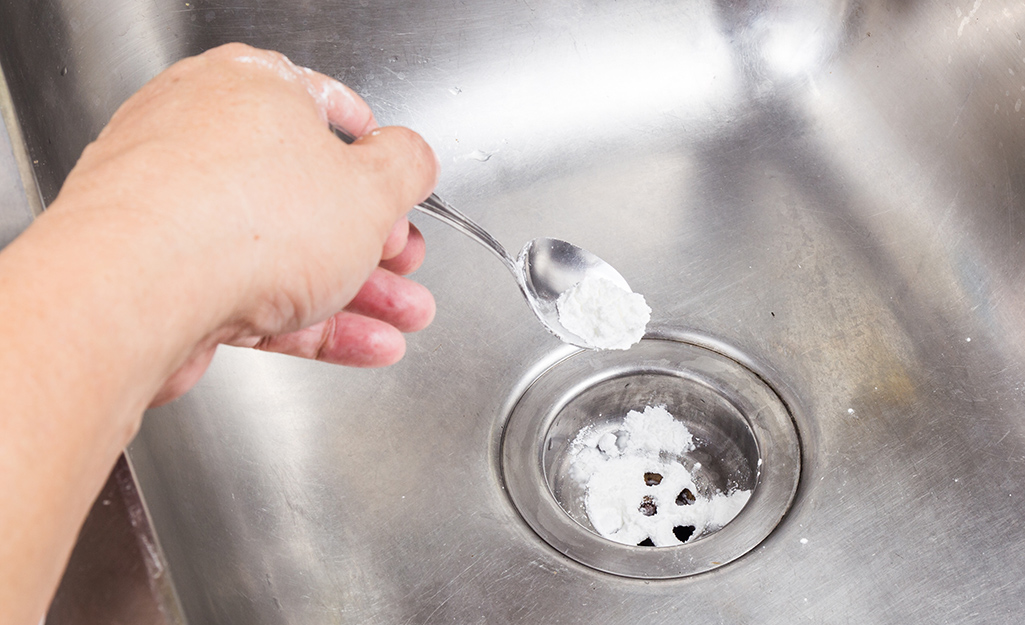
A baking soda mixture offers a way to unclog a sink naturally, as it proves gentler on your pipes compared to chemical drain openers.
- Pour one cup of fresh baking soda down the drain, followed by one cup of white vinegar.
- Place a rubber stopper or other sink hole cover over the drain opening.
- Wait 15 minutes to allow the vinegar and baking soda to unclog your drain, Then take out the drain cover and run hot tap water down the drain to clear the clog.
Use a Wet-Dry Vacuum to Clear the Sink
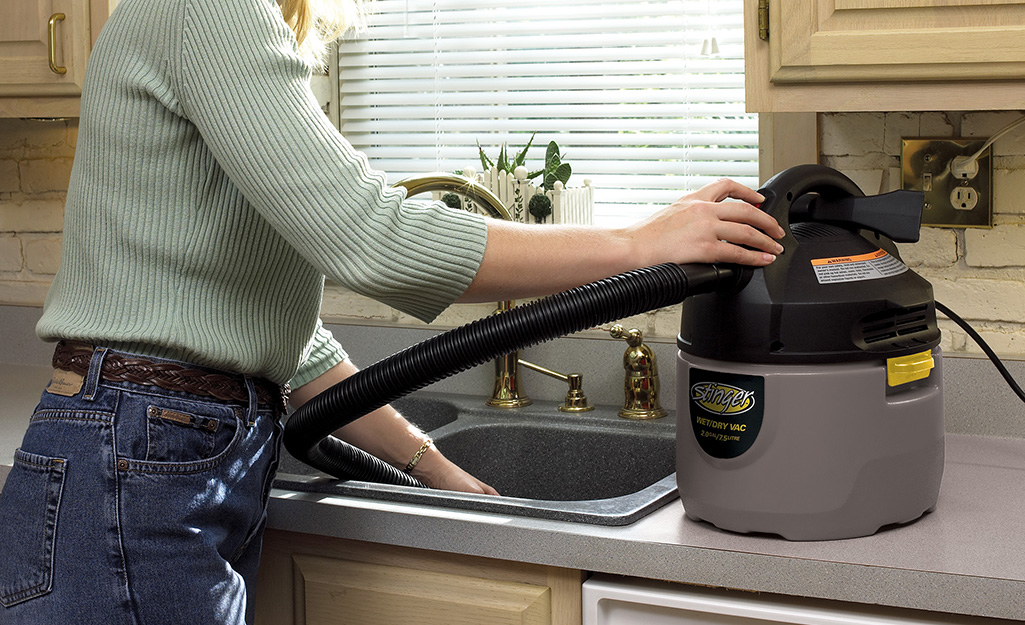
- Set up your wet dry vacuum for wet use. Follow the manufacturer’s instructions.
- Place the hose end at the entrance of the drain, then create a tight seal around the end of the hose and the drain.
- If the clog is on one side of a double sink, seal up the opposite side of the sink with a rubber stopper.
- Turn on the vacuum to the highest setting. The pressure of the vacuum should dislodge the clog.
Use an Auger on the Upper Part of the Pipe
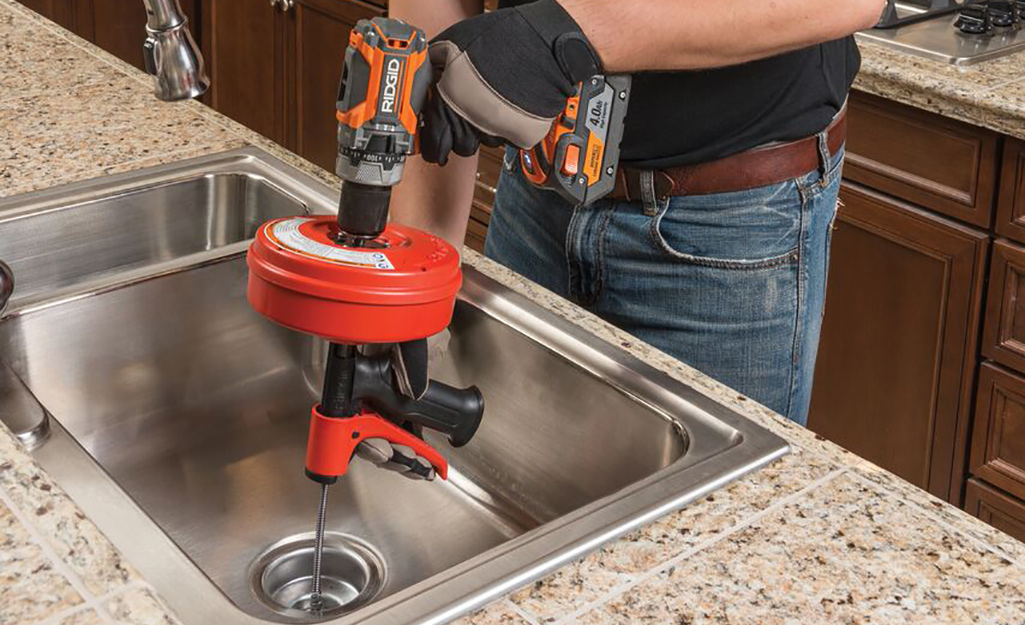
- Feed the cable from the auger (also called a plumbing snake) into the drain opening until you meet resistance.
- Once the end of the cable is touching the suspected clog, pull out an additional one foot of cable from the machine end and hold it as slack.
- Lock the length of cable, then begin turning the crank on the device. The cable will bore into the clog and push forward; pull out more cable if needed.
- You should be able to feel a change in resistance once the auger has broken through the clog. Retract the auger, then flush pipe with hot water from the tap.
- If you don’t meet any resistance, the clog may be further up the pipe in the branch drain.
Use an Auger on the Trap and Wall Pipe
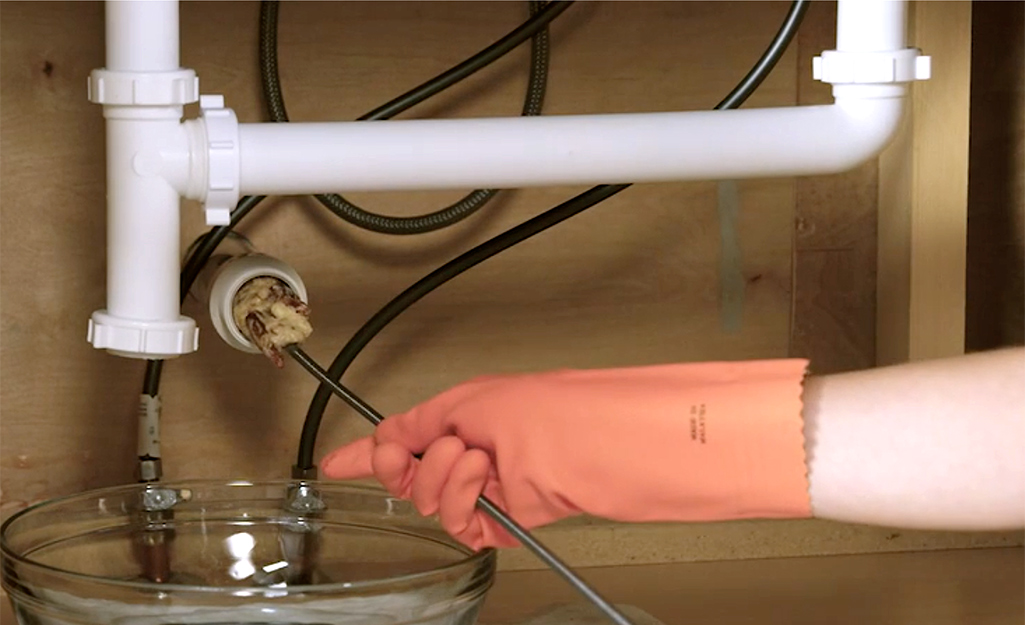
- Go under the sink and place a bucket under the pipe to catch excess water
- Unscrew the connectors on the PVC pipe that holds the P-trap (the curved piece of pipe) to the vertical and horizontal drain pipe.
- Check the drain trap for clogs. If you can remove debris from the trap, reconnect it, then run water into the sink. If the sink does not drain, the clog may rest farther up the pipe.
- Remove the horizontal pipe that connects to the pipe in the wall.
- Feed auger into the wall pipe as described above.
- When you have removed the debris, reassemble the pipe and trap and hand tighten the connectors. Do not over-tighten as the plastic connectors might crack.
- Flush the sink with hot water, which should drain quickly. Be sure to check under the sink as the water flows to be sure there are no leaks.
- Clean and dry the area under the sink carefully after you have finished your work.
Take Measures to Prevent Clogs
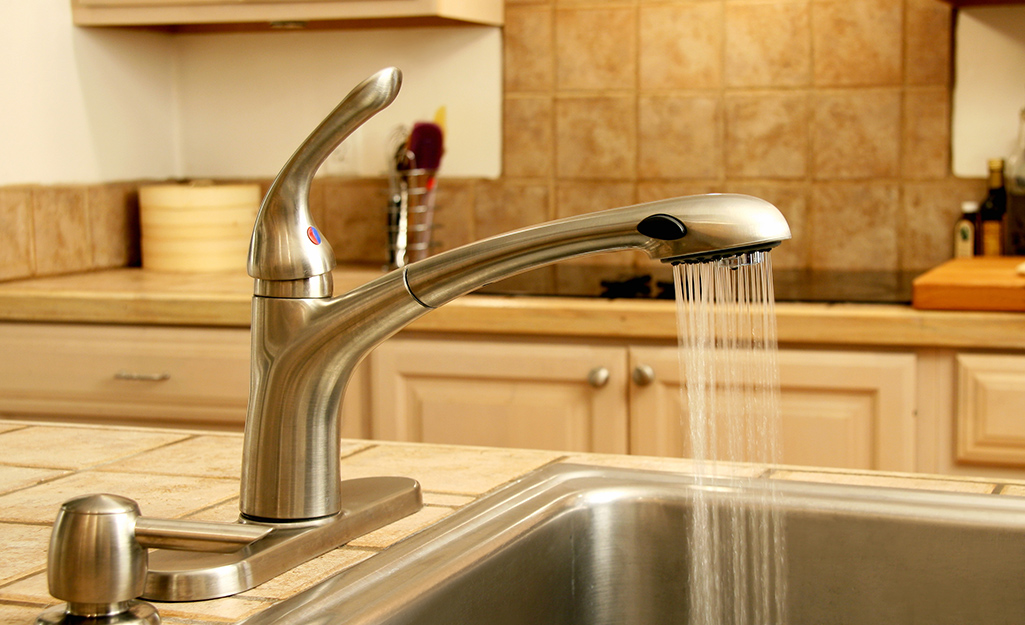
These steps can help you avoid fixing a clogged kitchen sink.
- Don’t overload the disposal. Grind no more than 1 cup of food waste at a time and do not put any inorganic matter down the drain.
- Do not allow grease, oil or coffee grounds to run down the drain or go through the disposal. Collect this waste in disposable containers or bags and remove them to an outdoor receptacle. Place coffee grounds in a compost pile.
- Freeze a mixture of half vinegar and half water into ice cubes. Periodically drop one or two of these into the garbage disposal to keep it fresh. The ground ice and slight acidity will also help scrape away buildup inside the disposal and the pipes.
- Run hot water from the tap after each kitchen sink use to help keep the drain cleared.
Learning how to unclog a kitchen sink can mean trying multiple methods that can involve plungers, baking soda mixtures, shop vacuums and augers. If these methods don't work, consider renting more heavy-duty drain cleaning tools from the Home Depot Tool Rental Center. Plumbing tools available include small, medium and large drain cleaners as well as augers, pumps, drain cameras and others.


